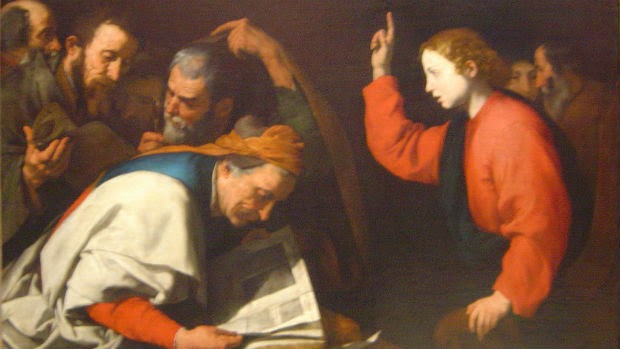As One that Hath a Familiar Spirit
Lincoln Cannon
8 December 2012 (updated 3 January 2026)
If you are familiar with the Book of Mormon and the King James translation of the Bible then you know they contain many textual similarities.
Nephi extensively quotes Isaiah. Jesus repeats to the Nephites many of his words recorded in the Gospels. Moroni teaches of charity with words nearly identical to those used by Paul in his first epistle to the Corinthians. These examples are three of the more familiar similarities, and are hardly exhaustive.
The similarities provide interpretive insights for Mormons engaged in devotional study of their scriptures. Subtle changes in Isaiah’s words as quoted by Nephi may increase clarity or breadth of applicability. Jesus’ repetition may emphasize the relative importance of some teachings. Moroni may tie the same ideas expressed by Paul to additional ideas that Paul did not address.
The similarities also pose interesting questions for Mormons committed to Book of Mormon historicity. How could Nephi have quoted parts of Isaiah written after Nephi left Jerusalem for the Americas?1 Why would a translation of Jesus’ words from Greek so closely resemble a translation of his words from reformed Egyptian?2 How could Moroni have repeated words nearly identical to those used by Paul when the two lived half a world apart?
Joseph F. Smith, sixth president of The Church of Jesus Christ of Latter-day Saints,3 commented:
“I do not know that I can say that the Church as yet has settled upon any explanation which could be regarded as an authoritative view on the subject. Each one has been left to settle the matter upon the lines which seem most reasonable to him. We have no word from the Prophet Joseph Smith, or those who were immediately associated with him in bringing forth the Nephite record, to aid us in a solution of the matter. We are left, therefore, very largely to conjecture.”4
Mormon apologists have proposed various explanations.
Parts of the book of Isaiah may be older than most scholars recognize.5 God may have syntactically revealed Jesus’ words to Joseph Smith as he translated reformed Egyptian.6 Both Paul and Moroni may have quoted a document written before Nephi’s departure from Jerusalem.7 Perhaps Joseph Smith used the Bible while translating the Book of Mormon.8
Joseph F. Smith trusted that this subject “would in time be satisfactorily settled.”9
If ever that time comes, when both apologists and skeptics acknowledge a satisfactory settlement, it will be the result of a holistic explanation. Such an explanation must account for the full extent and complexity of textual similarity between the Book of Mormon and the Bible, and that is possible only in context of a thorough presentation of their similarity. To that end, I have worked to present in detail a textual comparison of the Book of Mormon to the King James translation of the Bible.
In May 1998, BYU published the first edition of my work, As One That Hath a Familiar Spirit: A Parallel Textual Comparison of the Book of Mormon to the Authorized King James Version of the Holy Bible.10 A few months earlier, in December 1997, I had begun a manual computer-assisted process of comparing the texts.
Using Infobases’ LDS Collectors Library11 on a laptop computer,12 I opened the Book of Mormon in one window and a search dialog scoped to the Bible in another window, side by side. I typed or copied text from the Book of Mormon to the search dialog, ran the search, reviewed results, and noted all that seemed sufficiently similar – an admittedly subjective process. Verse by verse, phrase by phrase, and often word by word, I repeated the process until, in February 1998, I completed the comparison. After several weeks editing, eliminating weak similarities, highlighting common words, compiling an index, and incorporating feedback from family and friends, the final product was 112 pages13 of similarities.
I’m now prepared to publish a second edition, which is entirely computer-generated. The algorithm is basically the same process I learned and used while producing the first edition, except that it relies on objective calculation of improbable similarities14 instead of subjective assessment of significant similarities. During spare time in 2005 and 2006, I automated the algorithm in a software application,15 which of course dramatically improved the speed and accuracy of the process when compared to performing it manually. However, my attention refocused,16 and I did not publish anything at that time.
In 2012, I decided to make a few improvements to the software application and publish a second edition textual comparison of the Book of Mormon to the Bible in multiple parts:
- Computed Comparison of the First Book of Nephi to the Bible
- Computed Comparison of the Second Book of Nephi to the Bible
- Computed Comparison of the Book of Jacob to the Bible
- Computed Comparison of the Book of Enos to the Bible
- Computed Comparison of the Book of Jarom to the Bible
- Computed Comparison of the Book of Omni to the Bible
- Computed Comparison of the Book of Mosiah to the Bible
- Computed Comparison of the Book of Alma to the Bible
- Computed Comparison of the Book of Helaman to the Bible
- Computed Comparison of the Third Book of Nephi to the Bible
- Computed Comparison of the Fourth Book of Nephi to the Bible
- Computed Comparison of the Book of Mormon to the Bible
- Computed Comparison of the Book of Ether to the Bible
- Computed Comparison of the Book of Moroni to the Bible
Notes
-
The Book of Mormon places Nephi in the Americas around 600 BCE, and most scholars date some quoted portions of Isaiah to the time of Jewish exile in Babylon around 550 BCE.
-
The King James Version of the Bible is a translation from Greek. Joseph Smith, founder of the Mormon religion, claimed to translate the Book of Mormon from “reformed Egyptian” characters on gold plates.
-
The Church of Jesus Christ of Latter-day Saints is sometimes referred to as the “LDS Church” or the “Mormon Church.” It is the largest denomination of the Mormon religion.
-
Roberts, B. H. Defense of the Faith and the Saints. Vol. 1. Salt Lake City: Deseret News, 1907. 271-73. Print.
-
Gileadi, Avraham. The Apocalyptic Book of Isaiah: A New Translation with Interpretative Key. Provo, Utah: Hebraeus, 1982. 194. Print.
-
Skousen, Royal. “How Joseph Smith Translated the Book of Mormon: Evidence from the Original Manuscript.” Journal of Book of Mormon Studies 7.1 (1998): 22-31. Print.
-
Sperry, Sidney. “Literary Problems in the Book of Mormon Involving 1 Corinthians 12, 13 and Other New Testament Books.” Journal of Book of Mormon Studies 4.1 (1995): 166-74. Print.
-
Roberts, B. H. Defense of the Faith and the Saints. Vol. 1. Salt Lake City: Deseret News, 1907. 271-73. Print.
-
Ibid.
-
Cannon, Lincoln. As One That Hath a Familiar Spirit: A Parallel Textual Comparison of the Book of Mormon to the Authorized King James Version of the Holy Bible. Provo, Utah: Brigham Young University, 1998. Print.
-
LDS Collectors Library. Provo, Utah: Infobases, 1996.
-
My laptop computer ran the Microsoft Windows 95 operating system and contained an Intel Pentium II processor, capable of 855 million instructions per second (MIPS). By comparison in 2012, the processor in an iPhone 4 is more than twice as fast at 2,000 MIPS, and the Intel Hexacore Core i7 processor is fifteen times faster at 13,000 MIPS.
-
Each of the 112 pages in the first edition was 8.5 by 11 inches with .5 inch margins and 10 point font.
-
The algorithm compares each set of ten consecutive words in one text to each set of ten consecutive words in another text. It identifies matching words between the two sets. Then, based on the frequency at which the matching words appear within both texts generally, it calculates the probability that the matching words would appear together within a set of ten words selected randomly from both texts. The resulting probability is a decimal between one and zero. The algorithm converts this decimal into the absolute value of its logarithm rounded to the nearest integer, which provides an improbability magnitude. Since the most interesting matches are the most improbable, the algorithm returns only matches with high improbability magnitudes. In this case, I set the algorithm to return only matches with an improbability magnitude of 13 or higher, which approximately corresponds to a probability of .0000000000003 or lower.
-
I coded the software application in C#.NET, SQL and XML, and ran it on various Microsoft Windows operating systems and Microsoft SQL Server databases.
-
From 2006 to 2012, I focused most of my spare time on organizing the Mormon Transhumanist Association and developing the New God Argument.
Editions of Computed Comparisons of the Book of Mormon to the Bible
I have published multiple editions of my work comparing the text of the Book of Mormon to that of the Bible. The first edition was computer-assisted and published by Brigham Young University in 1998. The second edition was computer-generated in 2006. It ultimately served as the basis for the Discerner project in 2015.
Below is a list of articles and websites that provide more information about and access to each of the editions, as well as related comparisons:
- As One that Hath a Familiar Spirit (First Edition) at BYU
- Comparison of the First Book of Nephi to the Bible (Second Edition)
- Comparison of the Second Book of Nephi to the Bible (Second Edition)
- Comparison of the Book of Jacob to the Bible (Second Edition)
- Comparison of the Book of Mosiah to the Bible (Second Edition)
- As One that Hath a Familiar Spirit (Second Edition)
- Comparison of Book of Mormon (LDS 2013) to Bible (KJV 1769) at Discerner
- Comparison of Bible (KJV 1769) to Book of Mormon (LDS 2013) at Discerner
- Self-Comparison of Book of Mormon (LDS 2013) at Discerner
- Self-Comparison of Bible (KJV 1769) at Discerner


